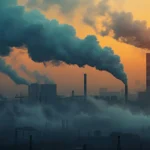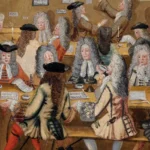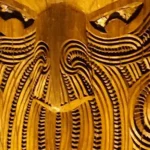The need for knowledge sharing has never been clearer and more urgent than today. From climate change to food security, HIV to COVID-19, humanity needs global solutions to global challenges. The vast international community of stakeholders involved in the creation and sharing of knowledge has been responding to this need for many years—researchers, government funders and policy agencies, private foundations, commercial publishers, universities, libraries, and more—driven largely by their own interests and judgement but also by the judgement of respected global organizations like the United Nations who have tried to define a broad picture of what kind of global knowledge sharing needs exist and what kind of global action is needed. While the amount of research being conducted in the world has steadily increased over the years, roughly doubling every 20 years, and while this increase has led the world to remarkable new heights, our knowledge sharing practices have proven difficult to change. In the judgement of many, these practices, while growing in many parts of the world, are still inadequate to meet the urgent needs of today.
Enter the open access, open data, open science, open source, open government, and open education movements. Taken together, these movements have made a significant contribution to the evolution of our knowledge sharing practices. Each of these movements is, however, entirely separate. Each has a rich and unique history, a massive diversity of outputs, goals, tools, measures, methods, actors and stakeholders, and vibrant ecosystems of innovation. These movements also lack coordination toward common goals, which has resulted today in a lack of leadership on broad and globally workable open solutions, a lack of support for open infrastructure and other open needs, and slow acceptance and adoption of open policies.
In partnership with the Open Scholarship Initiative (OSI), UNESCO has been working since 2015 to create a common ground approach to the future of open knowledge that embraces the diversity of the open landscape and creates a sustainable and coherent approach to this future that works for everyone everywhere. An important part of this challenge has been understanding and knitting together the vast diversity of perspectives of all open knowledge stakeholder groups from all parts of the world, and also seeing the entire “open scholarship” landscape as being more than just about journal publishing and science, but involving a wide range of closely related interests and activities.
Where exactly do all these different perspectives, interests and activities intersect, and can a policy framework be built around this intersection that successfully merges our “meta” policies around open so we can begin to collaborate on our open goals more effectively, and in doing so enhance and streamline all open outcomes for global knowledge and society? This report explores key points of intersections under the rubric of “open solutions”—a high-level approach to open founded on a broad embrace of open instead of a multitude of disconnected approaches. The argument presented in this report is that adopting a broad open solutions focus will help policymakers develop a more effective open knowledge environment at all levels, from government to education to research, and that developing such an environment will create enormous benefits for science and society.
The final sections of this report describe an action plan that UNESCO should consider for getting from where we are now in the global open policy debate to where we need to be. A draft marketing approach for this plan is included in the annex section of this report.
Key findings (background & conceptual analysis)
The key findings from this report, supported by many scholars in this field, revolve around the realization that openness doesn’t have a single or set definition. Rather, open outcomes exist along a broad spectrum, and correspondingly, the definitions we apply to open and the open solutions we invent also vary quite widely. There is common ground, however, and working together on this common ground can help us come up with open solutions, approaches and policies that are much less disjointed than now and are ultimately more beneficial for the broader cause of open knowledge, which doesn’t recognize the discrete boundaries that separate data from text, government information from science information, and policymaker from private citizen.
Open solutions have been evolving for decades now, if not centuries. Open is not a new phenomenon. Marking exact starting points in this evolution can lead to spurious and self-serving conclusions. Many of these efforts were initially fueled by the idealism that open information was an unalloyed public good; but over time, many have also developed a deeper sense that the reality of open is more nuanced, and that there are no one-size-fits-all solutions or interpretations.
Recognizing the similarities between different open solutions can help us understand these efforts aren’t necessarily separate or unique, but instead are part of a broad, long-term, multifaceted push from many corners of many societies to make information of all kinds more open. Understanding how similar open efforts have been with regard to common challenges and approaches can help us merge open policies together in a way that wouldn’t be possible by focusing only on the specific practices of each open movement. And integrating these conversations can help us integrate efforts and policies in ways that might dramatically and effectively accelerate the development and uptake of open policies. We might also be able to develop common language that can help facilitate the better communication of needs, processes and outcomes. Open knowledge is a broad endeavor with a shared goals. Recognizing this will be key to transforming open solutions into more than just the sum of their separate parts.
Open solutions today have a wide variety of definitions and interpretations, and a wide variety of outcomes, all expressing varying degrees of openness and experiencing varying degrees of acceptance by open advocates as being open or not open enough. Different stakeholder groups have starkly different points of view. However, all “sides” are wrong, and no one side has all the information it needs to make an informed judgement. We know open involves a spectrum of motives, outcomes and solutions. But we can no sooner pick the “right” answers from this diversity than pick the right colors from the rainbow. Each is important, and each contributes to the greater whole. By focusing instead on the whole, we can find common ground for bold and needed action, and also create mechanisms by which our debates about best practices and requirements will settle themselves over time through more engagement from various knowledge-providing and knowledge-seeking communities.
Over the short-term, ideologically-driven (as opposed to evidence-driven) actions will continue to create policy whiplash, where publishers and funders don’t know what to do, researcher opinions are further marginalized, and the actions that sound brilliant today are roundly derided tomorrow. In addition, if our open reform efforts are created by the global north without adequate input and participation from all groups everywhere, then the open solutions we create and deploy are going to continue favoring those with more privilege. The richer countries will be able to fill open repositories with information, which makes their information and perspective even more dominant than now. In terms of ideologically-driven licensing rationales, the world is ready to stop pushing specific technical and licensing regimes as our core objective for open, and instead let the debate move on to other narratives like good data, common open solutions, and common goals.
Key recommendation (steps UNESCO should take)
The key recommendation from this report is that UNESCO should host and promote an open solutions approach that focuses on achieving our common goals for open—from discrete common goals like improving science to grand challenges like tackling climate change. This goal-centric approach is built on a widely-used and well-developed model (Theory of Change), and on the common ground that unites all open solutions and all communities in the information communication space, and that should underpin all future open solutions policies. Supporting communities of practice will still be essential—we will still need open access, open data, and open source solutions for particular fields, for example, and we still need innovation to occur at this level. But more broadly, these communities of practice should also be connected at a high level through common goals so they can innovate together to build a future of openness that advances knowledge and discovery as opposed to simply collecting open artifacts. The key to this high level framework for collaboration is inclusiveness and flexibility. This framework needs to be built by the entire community, not imposed from the outside, and especially not imposed in a way that is led by ideology instead of evidence.
The focus of a new, global open solutions policy should be to figure out what we want to achieve with open and then build solutions capable of reaching these goals. Opening information is not the end goal, but only one small step in a very involved and complex process of preparing information for access and reuse. Rallying around our common goals will be an effective way to begin mobilizing the expertise we need to actually do something with open information as opposed to simply collecting it. Rather than deciding what form open should take and legislating policies to create this outcome, we need to construct a framework for dialogue and collaborative action on our common goals. Building on this framework will lead to real and robust global solutions that are inclusive, diverse, and focused on practice-based areas of common interest and common benefit.
To begin, we need a clearer and more detailed understanding of exactly what researchers want and need, what they will use, and what we hope to accomplish with open information so we can ask good questions, collect meaningful information and pursue effective solutions. It’s vital to understand this wide diversity of perspectives, and also understand that one-size-fits-all solutions aren’t what we should endeavor to develop. Understanding the diversity of needs and ideas in this space can also help us identify where we can construct broad support mechanisms for everyone. This approach, along with trying to better understand the open solutions space, will ultimately provide much more effective support for the future of open than creating overly-detailed open policies that no one will follow, and that will be largely inapplicable to the majority of real-world open efforts.
The more effective framework for these solutions will likely be broad, flexible, and turnkey, allowing researchers to easily comply. Solutions will also need to be clearly beneficial to research and researchers; the incentives switch needs to be flipped or open will only grow as far and as fast as we push it. Constructing a self-incentivized solution space will allow solutions to evolve that people want and need. And critically, these are the solutions that people will end up using. Use may be key because the world already has plenty of ambitious knowledge sharing platforms that simply don’t contain enough data to be useful, and/or don’t get enough use or upkeep to merit further investment.
Our greatest mistake as policy analysts and advisors would be to think we are smarter than this community’s marketplace of ideas and outcomes, and recommend that UNESCO attempt to impose a rigid ideological order on this diverse and deeply complex landscape. Doing so would be at best ineffectual, and at worst might fracture the global solution space instead of unite it. A global open policy needs to be more than just words. Without creating a framework for open solutions along with a framework for policy engagement through which diverse voices can be heard and community action can be pursued together, our open actions and policies will not have the truly transformative impact we need them to have, and could even be harmful. Transitioning to this environment of collective understanding and action will take time and will involve robust and dedicated efforts.
Creating UNESCO’s open solutions policy framework is only part of the solution. The first step will be for a critical mass of supporters in this community to stop thinking of the open solutions universe as something that belongs to any single institution, stakeholder or interest group.
Key assessments (needed indicators and dimensions)
Indicators and dimensions are the keys to policy evaluation and a necessary part of the policy development process. However, they are also very easy to get wrong. Wrong indicators and dimensions can lead to wrong policies and outcomes. In an undertaking like ours, where definitions are fluid and different stakeholders have different goals, it’s almost inevitable that inventing indicators and dimensions to measure the current open solutions landscape will be both suspect and inaccurate. It will be better if the open indicators the global community wants and needs evolve from the goals we set together. These indicators may end up being very narrow, focusing on outcomes such as: how effectively we’re addressing a particular challenge in science or government; or how quickly books in the public domain are being digitized; or how widely popular software (like WordPress) is being used. Or they may be discipline-specific, or measure progress by institution, region, or even globally. We simply won’t know until we first discuss our common goals and then develop the assessments we want and need to measure our progress toward these goals.
Outside this tight and relevant bubble, though, there are a number of dimensions indirectly related to openness that also need to be assessed. These aren’t the dimensions we were looking for, but they are important nonetheless, including: forecasting what impact the fracturing of the open solutions space will have; getting a better grasp on the scope and impact of current inequities with regard to knowledge access; mapping out the stakeholder space to understand explicitly where more and better connections can be made; understanding the impact of SciHub and predatory publishing on open usage; and other detailed concerns.










